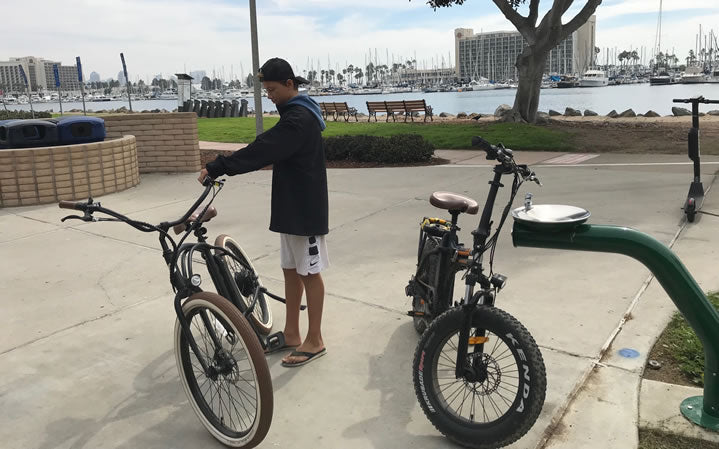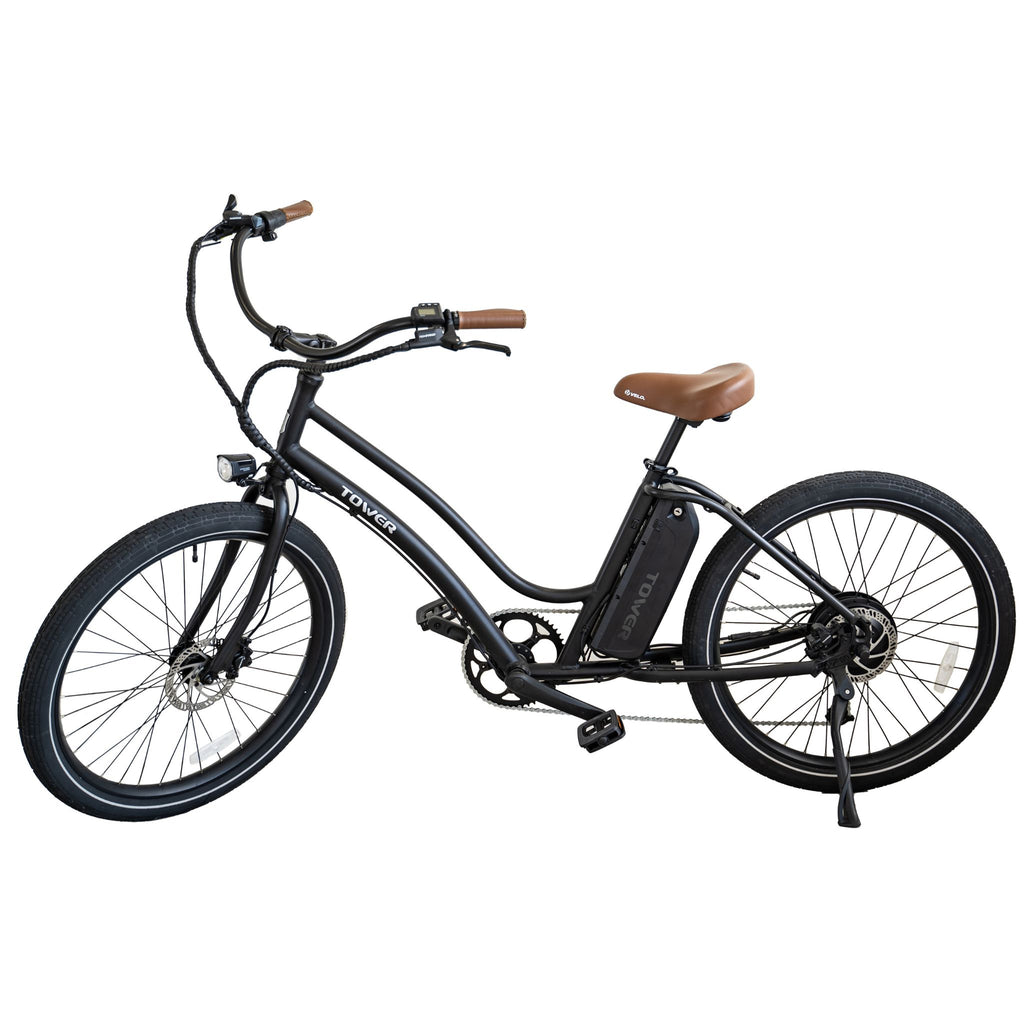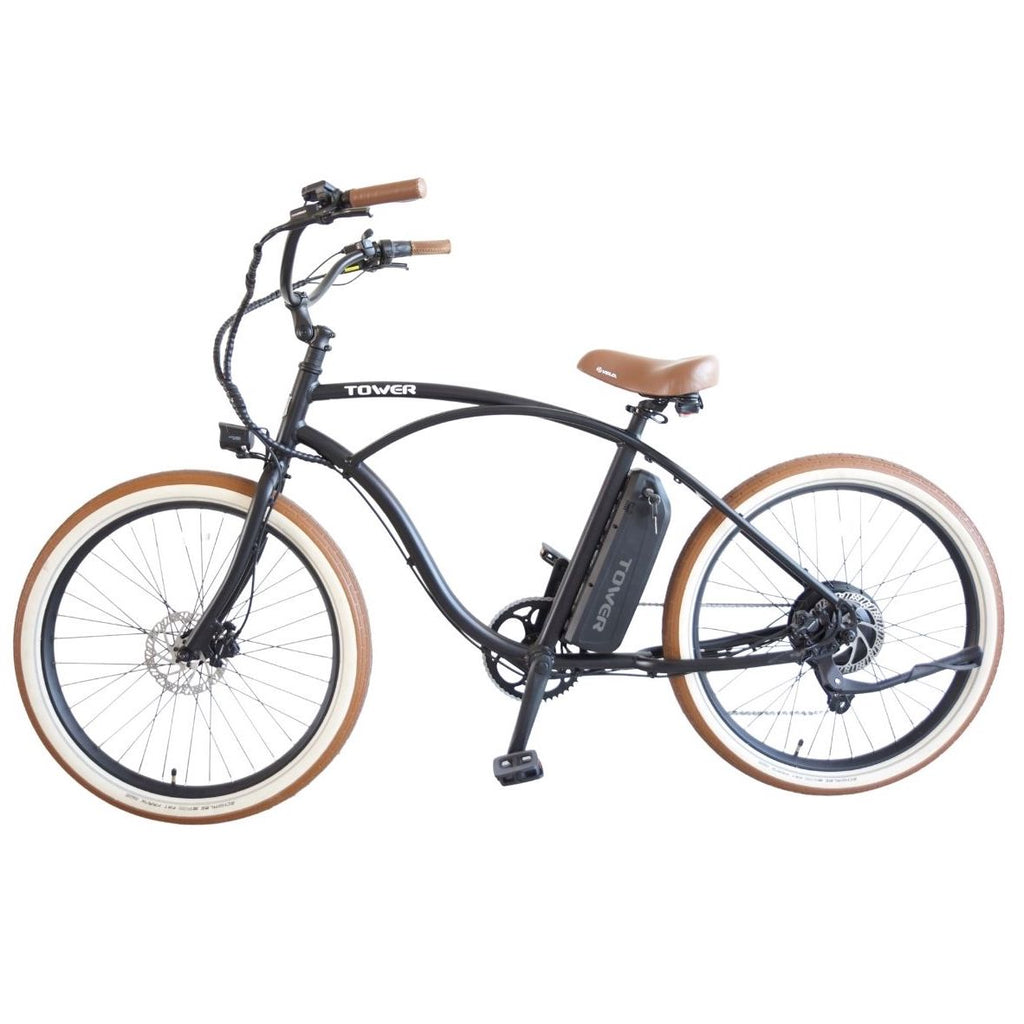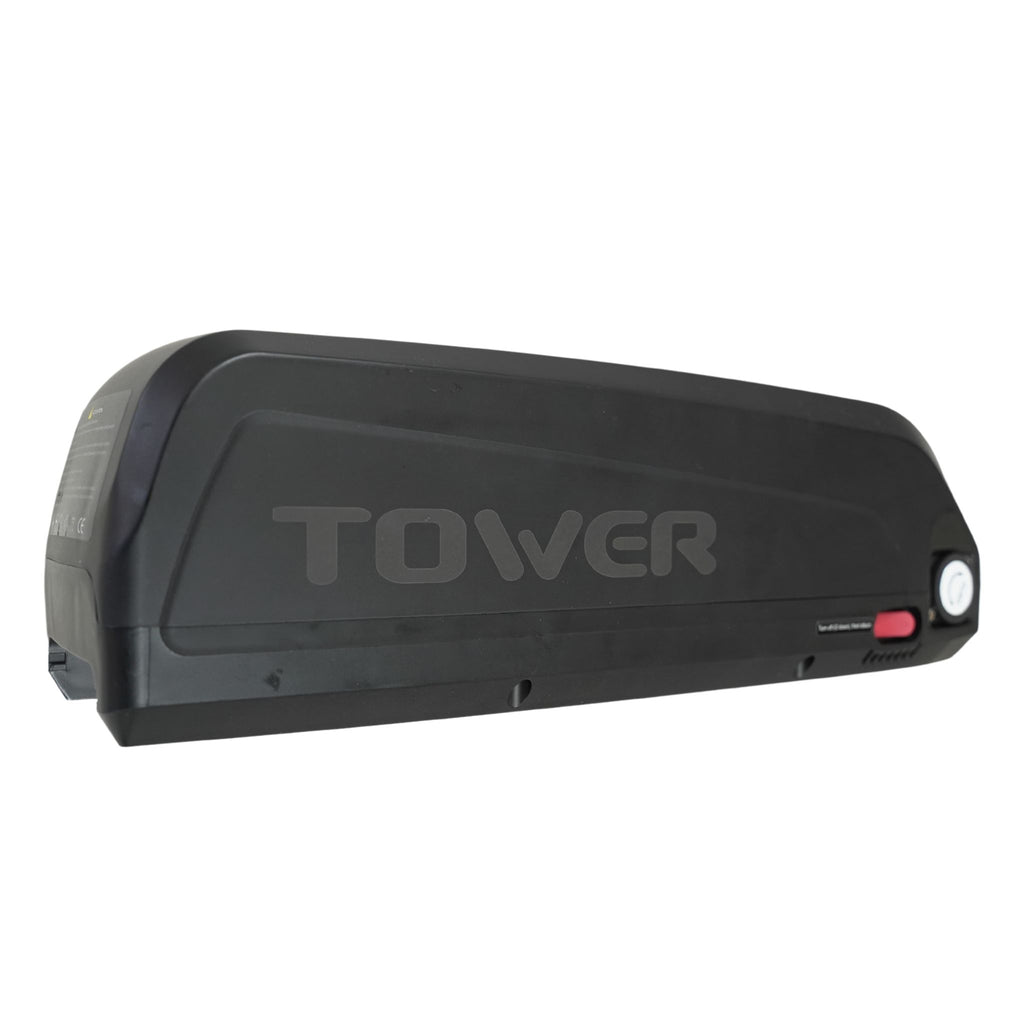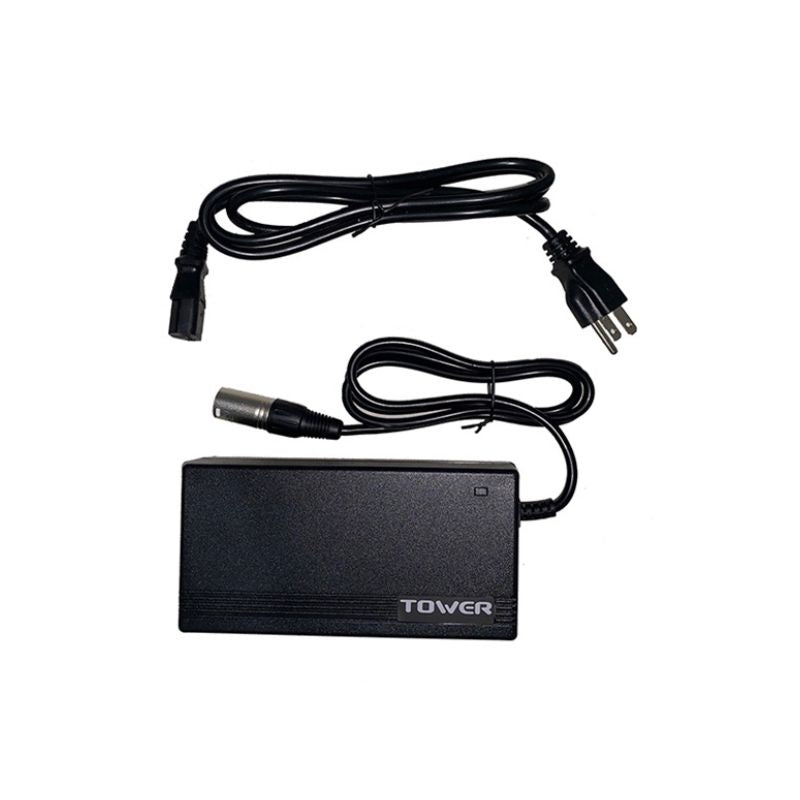Rad Electric Bikes -vs- Tower Electric Bikes
When I first asked someone in the eBike industry what they thought of Rad Electric Bikes, their answer was telling. They said, and I quote, "Yeah, they're more of a marketing company than an eBike company." The deeper I dig, the more that rings true. Their ads are everywhere. I've been in the online business space for 20 years so I have a decent feel for this, and my guess is they spend more on ads trying to sell you a bike then they spend on producing the bike you are ultimately buying itself. When brands do things like this, they tend to cut a lot of corners on the product front. Seems their focus is trying to make products that they think they can sell to people. It's not really about the product, it's about the sale. I've seen transactional companies like this in other industries, and once you buy, it's your problem.
At Tower Electric Bikes, we focus obsessively on making products that people want to buy. Make great products and people will want them, then when they experience them they'll tell all their friends. We start small and focused, and obsess about the product. It's how you build an authentic brand. We're not trying to be the biggest. We're not trying to "move the most units." More importantly, we're not trying to "sell" you anything.
In our sister company, a direct to consumer SUP brand called Tower Paddle Boards, we took a similar product centric approach and didn't advertise for the first 4 years of operation. We simply focused on making products that people wanted to buy. Sales started small and grew every month. We created the #1 fastest growing company in San Diego and landed at #239 on the INC 500 list of America's fastest growing companies. Today, it's one of the most well known and trusted brands in SUP. The approach we are taking in eBikes is identical.
Making eBikes you think you can sell, versus making eBikes people will want to buy, is a big philosophical difference. The former is focused on how the sale of those products benefits the company. The latter is focused on how the products benefit those who buy them.

Not all direct to consumer brands are the same
Rad Electric Bikes and Tower Electric Bikes are both direct to consumer brands that sell eBikes for between $1000 and $2000 (eBikes that would certainly cost $2000 to $4000 in a retail store), but they are very different companies. To understand how different they are, just look at their respective pricing and returns policies.
Hit a price point, versus cost based pricing
Rad Electric Bikes target a $1499 price point almost religiously like it is some kind of a magic price point. I guess they've determined that's about what they can sell an eBike to someone at, so they go with it and then make a product that works for that. This is across a pretty varied line of electric bikes. The fat tired mountain bike... $1499. The cargo bike... $1499. The folding bike... $1499. The city bike... $1499. Must be a magic price. Before China tariffs, it was $1499. After tariffs, they went up then right back down to $1499. Can't get away from that magic price. They're making products they think they can sell, which is an eBike that costs $1499. It's all about getting the sale.
At Tower Electric Bikes, we focus on making products that we love and would want to buy ourselves. Not because of a magic price point, but because we just love the product and we think others will too. Then we see how cost effectively we can produce it and then add a fair markup and the final price is what it is. On our electric beach cruiser, that price came to just under $1700. It's a great product, and with our direct to consumer business model it's a great deal. A bike of comparable quality sold in retail would sell for twice that.
A transaction versus a relationship
I checked the Rad Electric Bike return policy just before I wrote this. It's pretty telling.
• If you buy something and change your mind that afternoon (before it ships), cancelling your order is "subject to a 10% processing fee". They didn't even do anything yet. If you got a $1499 eBike (which you would because that's the price on them all) with tax that might be $1600, so you're potentially on the hook for $160. Ouch.
• Once it ships, it can only be returned within 14 days of receipt if it's unopened and unused and even then it's "subject to up to a 25% restocking fee" plus a $175 shipping fee. Do the math on that $1600 purchase and that's $575. I'm unclear if this is on top of the 10% processing fee, so it could cost you $735 to return your unused eBike. In all my time in eCommerce, I've never seen a more punitive return policy. Never. And this is just for sending the unopened box back. You literally haven't even used the product yet.
• If you opened the box or tried the eBike, no return is possible. You are stuck with it.
Once you buy it, it's your problem. And yet Rad Electric Bikes sold $44M in eBikes in 2018. They're good at selling people. I'll give them that.
At Tower Electric Bikes, we're making eBikes that people want to buy. We're not trying to sell you on anything, and certainly not trying to stick you with anything. If you want it, great, we'll hook you up. But we're not forcing it on you. And if you get it and aren't 100% satisfied, please send it back within 30 days of receipt in its original condition and we'll sell the return to someone else. Hang onto the boxing in case you do have to return it. So go ahead and use it, but clean it up. And if it's unopened, and you just changed your mind, all the better for us. These things are expensive to ship, so you will have to cover the cost to return ship it to us (so about $185 thru ShipBikes.com), and we'll eat the outbound shipping we incurred. We do not view this as some extraordinarily generous return policy, rather it's just a reasonable one by a company that sees your purchase as the beginning of our relationship, not just a transaction. It's the same level of service we've offered our customers for a decade in our paddle board company, and part of what made us an industry leader and beloved brand in that space.
Tower Electric Bikes is bringing cool to eBikes
The market for eBikes today goes far beyond an older demographic or people who have difficulty riding regular bikes. We began developing our high-end regular (non-electric) beach cruiser in 2015. We set out to create the world's finest beach cruiser. With classic styling, drop dead good looks in a matte black on black with brown leather accents, a belt drive, a lightweight aluminum frame, and innovative passenger pegs, we think we hit the mark. At a direct to consumer price of $495, this is half the $1000 price tag this quality of bike would fetch in a retail bike store.
At the same time in 2015, we began watching the eBike market very closely for a few years to see what existing brands were doing well and what they weren't doing so well... the good, bad, and the ugly. Three things stuck out to us:
#1: Design was an afterthought - Design and style of eBikes was a complete and utter afterthought. Most bikes were being cobbled together by engineering types. It was all function, and little thought put into form. There was no sexiness to eBikes. The opposite perhaps.
#2: Most eBikes = Cheap bikes + electrification - Because quality batteries, motors, controllers, displays and other electronics needed to make an eBike were expensive and most people perceived eBikes as just a variation of a bike, the vast majority of brands were using disproportionately crappy bikes and bike components to keep the final eBike price down. Like Walmart quality bikes paired with insufficient electronics to keep the final eBike price under $1000, or $1200, or $1500. Some retail brands like Pedego Bikes were actually the rare exception here, but of course their eBikes sell for $3500-$6000. So consumers had the choice of buying a disposable eBike for $500-$1500 (the vast majority of eBike brands), or get a decent quality eBike from a dependable brand for $3500-$8000. Our take away was that this was odd. When someone spends $1000 on a regular bike, they're getting a pretty high-end bike. Sure, you can buy a bike for $100, but not many people do if they're planning to use it a bunch. So why then are the majority of eBike brands putting $400-$500 of factory cost electronics on a $100-$200 quality bike. Seemed ridiculous. If you're going to produce a $1000-$1500 product, might as well spend the extra 10% to use premium parts and make smart component decisions.
#3: eBikes were seen as cheating for older or disabled people - The perception of people who bike in the US was that eBikes were cheating... for lesser people who couldn't just peddle like the rest of us. Hard core bikers kind of despised eBikes. Many still do. There was a real hatred. Of course, eBikes aren't really a variation of a bike at all. They're not primarily for exercise and recreation. They're more for transportation with a side of recreation.
From those three observations, Tower Electric Bikes was born!
We decided there needed to be a company bringing cool to eBikes. If we wanted electric bikes to explode in popularity and for them to really alter how people get around, that's what we needed to do. Tower's brand with the beach lifestyle background was the perfect fit. First, we set out to lead every decision with design and style, as if we were making a luxury sports car company. Second, we only wanted to build an enduring brand, so the only viable option was to only go high-end on both the bike and the electronics... and the end result would cost what it cost. Of course, we'd sell it direct to consumer for half what it would go for in retail with our direct business model. It wasn't just about building great bikes, but about building a great value proposition. Lastly, we saw eBikes as cool transportation. We weren't trying to make a better bicycle. We weren't making a product specifically for handicapped people. We were making cool, stylish eBikes we love... wind in your hair transportation so beautiful that it exudes heart and soul.
Rad Electric Bikes "RadMini" versus the Tower "Beach Bum"
Rad Electric Bikes doesn't make a beach cruiser, so we decided to compare our Beach Bum to their RadMini foldable fat tire bike, which we were able to get our hands on for a thorough field test. It seems to be one of their more popular models. It had a 48v system paired with a 750w motor and a 14Ah battery, similar electronic specs to the Tower Beach Bum.
Value
With a superficial look, most people would say the Rad Electric Bike's "RadMini" is priced 11.6% cheaper than the Tower "Beach Bum" because the specs on the Rad Electric Bike are a 48v system, a 750w motor, and a 14Ah battery for $1499, while the Tower bike has a "lesser" motor and is priced $195 higher. Aside from even looking at actual motor performance (which we'll do below), there are a lot of other things to an eBike beyond these 3 spec points. Do the eBikes use cheap tires or expensive ones? How about grips and seat quality and materials? What's the quality of the brakes? What is the frame made of? How about the rims and spokes? How about design - is the controller tacked on in a box under the bike or is it an integrated controller? What's the finish like? What's the weight? And on and on.
When you boil it down, the Tower Beach Bum and the Rad Electric "RadMini" are not comparable bikes on component quality at all. The RadMini is a pretty low-end bike with really good electronics on it, even if the design of it all is lacking a bit. The Tower Beach Bum is actually a really high-end bike with really good electronics on it. It's expected that you'd pay a premium for a more premium bike.
Takeaway - On the pricing, they're probably in the same ballpark in terms of value but I'd argue that the Beach Bum at $1695 is a slight winner.
Performance
A 750w motor should be superior to a 500w motor, don't you think? Probably 50% better. Most people would assume that. Marketing people know that. Therein lies the reason Rad Electric Bikes touts 750w motors on all their bikes. Because it's a good sales angle. Has little to do with making bikes that people would want to buy... and a lot to do with making bikes they think they can sell people on.
Just watch the comparison video. The Rad Electric Bike definitely jumps off the line faster than our Tower Beach Bum, but we catch up pretty quickly, pass them, and then destroy them when the eBikes hit the hill. You see, the Tower Beach Bum's 500w motor is specially designed for high-torque and hill climbing. So the 750w versus 500w part, that's just a label on the box. It's just marketing fluff. Rad Electric Bikes quotes the newton meters (NM) of 80 for their RadMini, and we quote 65 NM on the Beach Bum. But the proof is in the hill climb challenge.
Aside from the difference in hill climbing power of these bikes, the top speed is about the same in the 23-24 range. The RadMini is definitely fast off the line, which has positives and negatives. The jumpiness can be a liability at times. The Beach Bum definitely has better mid-range torque.
Takeaway - Don't get fooled by the 750w spec. The 500w Tower Beach Bum outperforms here. The bigger take away is, "What else are they being disingenuous on?"

Components
Rad Electric Bikes put good electronics on a disproportionately cheap bike. They cut a lot of corners and you'll realize this once you own it for a while... but they don't get a lot of returns I imagine because they don't allow them ;) For sure, you'll get a lot of flat tires. Ask around. In about a dozen field tests, we got something like 8 flats. Twice we got double flats!
Some components are decent, but if you're going to drop $1500 on an eBike, it's probably worth the extra few hundred to actually get nice components all around. That's kind of the primary difference between a Rad Electric Bike and a Tower eBike.
Takeaway - This one isn't close. Tower's Beach Bum wins by a mile. Rad Electric cuts too many corners.
Weight & Ride
Most people will kind of gloss over the weight on Rad Electric Bike's RadMini because it looks like a small bike in pictures. The reality is it's a 67 lb tank with fat tires that rides more like an old school Honda Trail motorcycle. 67 lbs is heavy for an eBike. Why so heavy? Because it's a low-end steel bike -with low end components. The lighter you make a bike, the more it tends to cost.
Cruising down the side walk on the RadMini and you'll notice the tires are flat out noisy. But in the woods, those knobby tires would be super handy... if they weren't crappy tires that get flats on the regular. Seriously, on the one we had we experienced double flats at times when off roading. Changing the rear tire to fix a flat is an awful process you will never want to do again. Trust me.
The Tower Beach Bum comes in at 49 lbs. That's pretty lightweight when you're talking about eBikes, even the very highest end ones. It's built around a high-end, lightweight aluminum frame. The selection of all the components took weight into consideration. Remove the battery and even with the super heavy motor, controller and other electronics this bikes is about the same weight as standard beach cruisers. When you can do that, you know you are dealing with a premium bike underneath all that electronics.
The ride of the Beach Bum is a relaxed beach cruiser that just happens to have a range of 30-60 miles, and when you go that far you'll be thankful for the laid back ride position and the premium saddle seat. It's ideal for an eBike. You don't really want to be bent over a mountain bike for a 30 mile ride, much less a 5 mile ride.
While the fold up nature of the RadMini is a cool feature, at 67 lbs it's a hernia waiting to happen.
Takeaway - One of the biggest telltale signs of low-end bikes are the weight and ride. Rad Electric Bike's RadMini loses on this front.
Service
As direct to consumer brands, both Rad Electric Bikes and Tower Electric Bikes correctly have modular designs. You can swap out the controller, or battery, or LCD screen, or throttle, or the whole rear wheel if you need to. At Tower, if you have something with a problem, we'll ship you a new one to swap it out. I imagine Rad Electric Bikes will do the same.
Neither brands have physical stores, except in their primary cities of operation, so most consumers will have to find a local shop for repairs. Fortunately, with hundreds of thousands of eBikes being sold in the US each year, finding an eBike repair shop near you is getting easier and easier every month.
Takeaway - Rad Electric Bikes and Tower Electric Bikes are similar on this front. No clear winner.
Design
I like the looks of the Rad Electric Bike's RadMini for a trail motorcycle. Reminds me of the Honda Trail bikes my grandparents used to have on the back of their motor home. For a fold up eBike, it's pretty cool. It's also hernia inducing so I'm not sure how portable it really is at 67 lbs and awkward to lift when folded.
For a bike in Southern California, you feel pretty goofy noisily cruising down the boardwalk or on a sidewalk on what looks like a motorcycle. You will get quite a few dirty looks. So the design is cool, but it's just doesn't look like a bike, especially with those fat knobby tires. If all eBikes looked like this, they'd be banned from biking areas pretty quickly.
With the Tower Beach Bum, we designed it to look like a classic bike. We didn't even want people to notice that it was an eBike. After looking at the eBikes out in the market, seeing firsthand the sneers people give to people on eBike contraptions on the boardwalk, and reading about all the problems and grief eBike enthusiasts get for riding on bike trails, it was clear that people needed an eBike that just looked like a regular bike. That's what the Tower Beach Bum offers you.
Takeaway - Depends on what you're looking for. If it's an eBike, you'll love the Tower Beach Bum. If you're looking for a off-road trail bike, you'll probably love the looks of the RadMini, but I'd recommend looking a little deeper before you buy something you may regret.
*NOTE: We swapped out one of our seats on the Rad Electric Bikes RadMini here as their stock seat isn't that comfortable on longer eBike rides.









